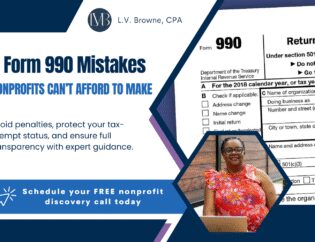
Charitable giving is a powerful way for individuals and businesses to support causes they care about while also reaping valuable tax benefits. By understanding the types of charitable contributions, IRS rules, and strategic ways to maximize your deductions, you can make the most of your generosity while reducing your taxable income.
What Is a Charitable Contribution?
A charitable contribution is a donation made to an IRS-recognized tax-exempt organization under section 170(c) of the Internal Revenue Code. Qualifying organizations include:
- Public Charities: Educational, religious, and community-focused organizations.
- Nonprofits: Groups that focus on health, education, and social welfare.
- Government Entities: Donations used exclusively for public purposes.
- Private Foundations: Depending on their classification and activities.
Contributions can take many forms, including cash, property, appreciated assets like stocks, and even food inventory. These donations not only support important causes but can also provide tax deductions if you itemize on your federal return.
Why Do People Make Charitable Contributions?
People choose to give for a variety of reasons, such as:
- Personal Values: Donors often want to support causes that align with their values, such as education, poverty alleviation, or medical research.
- Community Impact: Contributions fund vital services, strengthen social ties, and enhance community well-being.
- Financial Benefits: Charitable giving can reduce taxable income, especially when donating appreciated assets that avoid capital gains tax.
- Legacy and Social Responsibility: Many individuals and businesses see charitable giving as a way to leave a positive legacy and demonstrate a commitment to social responsibility.
Maximizing Tax Benefits from Charitable Contributions
To make the most of your charitable giving, it’s important to understand the types of contributions eligible for deductions and how the IRS rules apply:
- Cash Donations: Cash contributions are straightforward and can be deducted up to 60% of your adjusted gross income (AGI). Under specific IRS provisions, you may be able to deduct cash donations up to 100% of AGI in certain situations.
- Non-Cash Donations: Items like clothing, furniture, or vehicles can be donated and valued at fair market price. Deductions typically apply up to 50% or less of your AGI, depending on the donation type and recipient organization.
- Appreciated Securities: Donating stocks, bonds, or mutual funds that have increased in value can provide a double tax benefit: a deduction for the fair market value and no capital gains tax on the appreciated value.
- Qualified Charitable Distributions (QCDs): For individuals aged 70½ or older, QCDs allow you to donate directly from your IRA, up to $100,000 per year. These contributions can satisfy required minimum distributions (RMDs) without adding to your taxable income.
- Food Inventory Donations: Businesses can donate food inventory to assist those in need. This can lead to enhanced deductions, generally capped at 15% of taxable income, with temporary increases to 25% under specific relief measures.
Key IRS Rules for Charitable Giving Deductions
Understanding IRS guidelines is crucial to maximize your charitable giving benefits:
- Documentation Requirements: For contributions over $250, you must obtain a written acknowledgment from the charity. For non-cash donations exceeding $5,000, a qualified appraisal is needed to substantiate the deduction.
- Percentage of AGI Limits: Cash donations are typically limited to 60% of AGI, with certain qualified contributions allowing up to 100%. Non-cash contributions like appreciated securities usually have limits of 50% or 30% of AGI, depending on the recipient organization.
- Carryover Provisions: If your charitable contributions exceed the allowable AGI limit, you can carry over the excess to the next five tax years.
- Qualified Organizations: Only contributions to IRS-approved organizations are eligible for deductions. This includes public charities, religious institutions, and most government entities.
How to Document Your Charitable Contributions
To ensure your charitable contributions qualify for a tax deduction, proper documentation is essential:
- For Cash Donations Under $250: Bank records or receipts from the charity are sufficient.
- For Donations Over $250: A written acknowledgment from the charity is required, which should include the amount donated and any goods or services received in return.
- For Non-Cash Donations Over $500: Complete IRS Form 8283 to report the donation.
- For Non-Cash Donations Over $5,000: A qualified appraisal is required to substantiate the deduction.
- Verify Charity Eligibility: Use the IRS’s Tax Exempt Organization Search database to confirm the organization’s status.
Make the Most of Your Charitable Giving
Charitable giving not only supports causes you care about but also offers a chance to optimize your financial situation through tax benefits. By planning your donations strategically and understanding IRS requirements, you can maximize the impact of your generosity.
To learn more about how you can effectively incorporate charitable giving into your financial strategy and take full advantage of available tax benefits, schedule a consultation with Lakeesha V. Browne today. Let’s work together to ensure your contributions make a lasting difference while aligning with your financial goals










